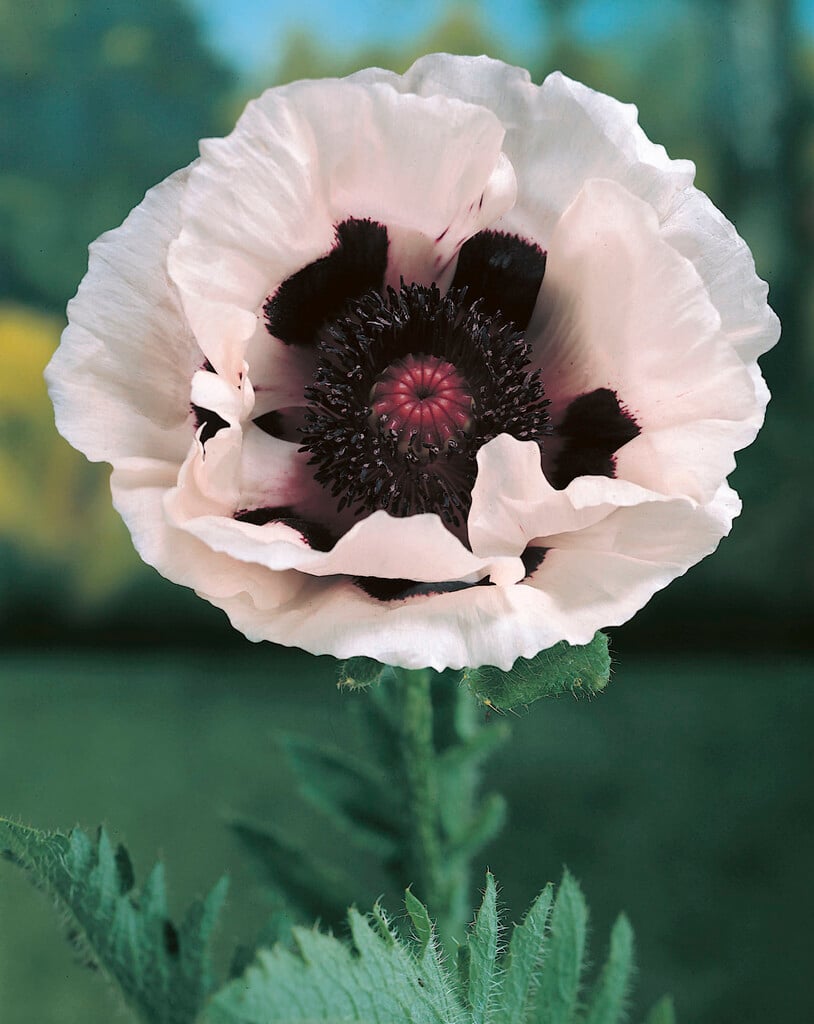Papaver (Oriental Group) 'Perry's White'
oriental poppy 'Perry's White'
A robust, deciduous perennial to 90cm tall, with scalloped, bristly, mid-green foliage. Large, ruffled, bowl-shaped white flowers 20cm wide, with dark purple to black central blotches, appear in summer
Size
Ultimate height
0.5–1 metresTime to ultimate height
2–5 yearsUltimate spread
0.5–1 metresGrowing conditions
Moisture
Moist but well–drainedpH
Acid, Alkaline, NeutralColour & scent
| Stem | Flower | Foliage | Fruit | |
| Spring | White | |||
|---|---|---|---|---|
| Summer | White | |||
| Autumn | ||||
| Winter |
Position
- Full sun
Aspect
South–facing or East–facing or West–facing
Exposure
Exposed or Sheltered Hardiness
H7Botanical details
- Family
- Papaveraceae
- Native to GB / Ireland
- No
- Foliage
- Deciduous
- Habit
- Bushy
- Genus
Papaver can be annuals, biennials or herbaceous perennials with simple or pinnately divided leaves and short-lived, saucer-shaped, 4-petalled flowers which may be solitary or in racemes
- Name status
Accepted
How to grow
Cultivation
Prefers a deep, fertile, well drained soil in full sun
Propagation
Divide plants in spring, or propagate by seed sown in containers in a cold frame; root cuttings can also be taken in late autumn or early winter
Suggested planting locations and garden types
- City and courtyard gardens
- Cottage and informal garden
- Flower borders and beds
Pruning
Cut back old flowering stems and leaves after flowering, for a fresh, second flush of foliage in the late summer
Pests
May be susceptible to aphids
Diseases
May be susceptible to downy mildews, powdery mildews, fungal wilts and verticillium wilt
Love gardening
Sign up to receive regular gardening tips, inspiration, offers and more
View our Privacy Policy
Get involved
The Royal Horticultural Society is the UK’s leading gardening charity. We aim to enrich everyone’s life through plants, and make the UK a greener and more beautiful place.

